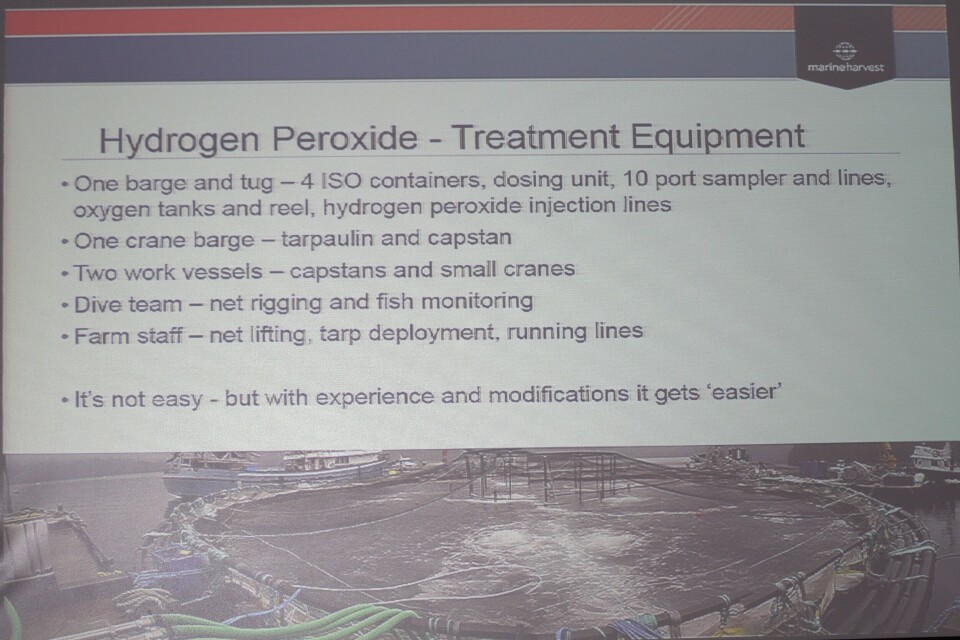
Hydrogen peroxide proves effective
Since 1999, the only effective method of controlling the number of sea lice on farmed Atlantic salmon in BC has been the use of the emamectin benzoate-based Slice. It has proven to be a very good treatment, with no signs of resistance building among lice populations, although a reduction in efficacy from over 90% to just over 80% was registered in one geographic area of the BC coast in 2012/13, prompting the pursuit of an alternative treatment method.
Some of the Pacific salmon species (pink, coho and Chinook) also don’t seem to be bothered by sea lice, with these fish being able to react to and remove Lepeophtheirus salmonis quite efficiently.
During a recent national aquaculture conference on Vancouver Island, Diane Morrison, Fish Health and Food Safety Director for Marine Harvest Canada, described the results of the company’s first attempt at using the hydrogen peroxide-based Interox Paramove 50 compound, supplied by Solvay Chemicals in the US.
Dr Morrison explained that, since 2003, the regulations governing aquaculture in BC have established a set of Action Thresholds with respect to the number of sea lice being found on farmed Atlantic salmon;
-
March 1 – June 30; if more than 3 motile lice per fish, action must be taken within 14 days. Sampling to be done twice per month
-
July 1 – February 29; if more than 3 motile lice per fish, monitoring must be increased from the once per month requirement
She also said that there is a good level of cooperation among the industry players, and treatment scenarios are often coordinated. She added that it took about a year to get approval for the first use of hydrogen peroxide at a salmon farm near Klemtu on the central coast of BC, which took place in March of last year (2014).
Some of the findings from the treatment:
-
It took one full day to do one net pen (circular, HDPE). Later trials increased the capacity to 3 pens/day using a wellboat, and 2 pens/day using tarpaulins.
-
Treatment dose: approximately 1,200 ppm for 15-20 minutes (10 lines were used in each pen for the monitoring of H2O2 concentration).
-
7 day post-treatment mortality: 0.4%.
-
Lice removal rate: 94% - to a level of 0.3 motile lice per fish on the average. Levels stayed low for a period of approximately five months - until natural runs of wild salmon started to come in from the open ocean.
-
Larger fish (>800 grams) should be treated using tarps, smaller fish can go into a wellboat for treatment.




















































